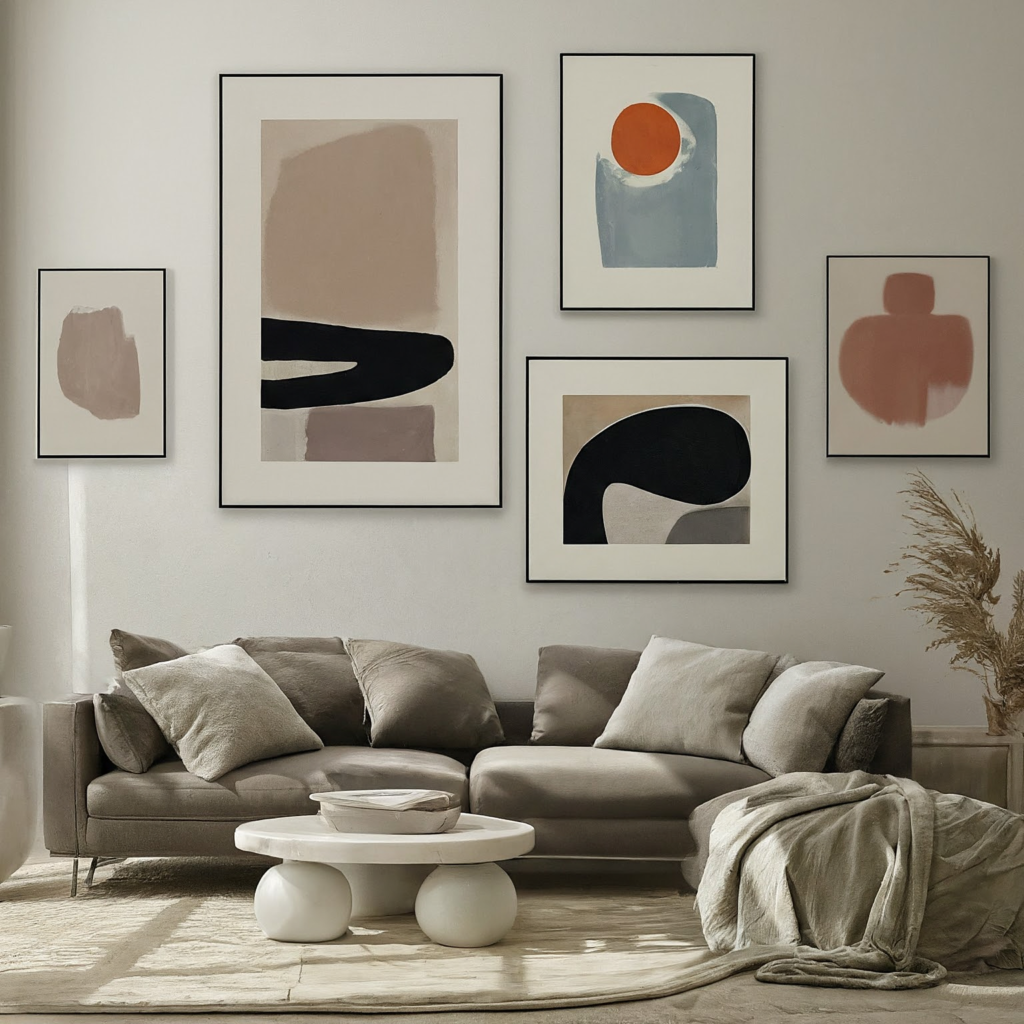Incorporating art and photography into your living space is a transformative way to personalize and elevate your home decor. As a leading architect and decorator, I’m thrilled to guide you through the latest trends and techniques for achieving a harmonious and stylish environment using artwork and photographs.

1. Understand the Space and Purpose
Before selecting art pieces, it’s crucial to comprehend the room’s functionality and the mood you wish to evoke.
- Living Room: Opt for warm-toned artworks for a welcoming atmosphere or abstract pieces for an intellectual touch.
- Bedroom: Choose calming images, such as serene landscapes or muted color palettes, to foster relaxation.
- Home Office: Utilize motivational art or a gallery wall of photography to inspire creativity and focus.
2. Select a Unifying Theme or Color Scheme
A cohesive theme or color palette ties multiple artworks together, creating a balanced and pleasing aesthetic.
- Consistency in Color: Utilize shades already present in your decor, like throw pillows or curtains, to choose complementary art.
- Thematic Focus: Group art by theme—like travel photos, nature, or modern abstracts—to ensure a narrative flow across the room.

3. Create a Focal Point
Positioning an eye-catching piece of art as a focal point can unify a room’s decor.
- Statement Piece: Large-scale art or a bold painting above a mantle or sofa captures attention and adds drama.
- Symmetry and Asymmetry: Use symmetrical arrangements for a formal look, or experiment with asymmetrical placements to add interest.
4. Mix and Match Different Styles
Combining varied art forms and styles adds depth and character to your space.
- Eclectic Mixing: Pair modern artwork with vintage photographs for a rich and layered aesthetic.
- Diverse Mediums: Engage different textures and forms, such as canvases, framed prints, and metal art, to heighten visual interest.
5. Consider Scale and Proportion
Balance wall art size against the dimensions of available wall space and room size.
- Proportional Pieces: Large walls benefit from larger artworks or grouped smaller pieces, while smaller pieces are best used on accent walls or in tighter spaces.
- Varied Heights: Vary the height and spacing of your artworks to create an organic and dynamic display.

6. Enhance with Lighting
Lighting your artwork appropriately highlights its beauty and adds ambiance to the room.
- Dedicated Lighting: Install picture lights or track lighting to illuminate key pieces without causing glare.
- Natural Light: Adjust shades and curtains to control how natural light falls on your artwork, enhancing colors and textures.
Conclusion:
Art and photography are powerful tools in interior design, capable of influencing emotion and infusing personality into a space. By carefully considering the selection, arrangement, and lighting, you can create a harmonious and visually captivating environment that speaks to both current trends and your unique identity. Whether opting for a minimalist approach or an eclectic ensemble, the key is to let your space tell a story through its artwork, enhancing the overall aesthetic and resonance of your home.
